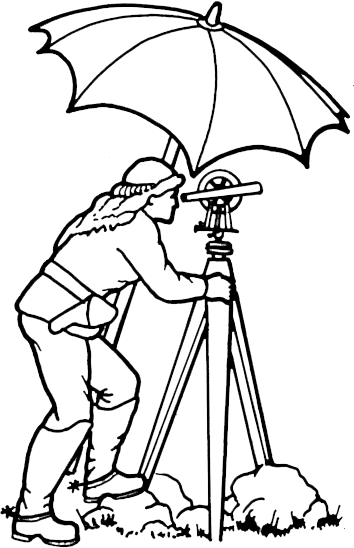- 20 February 2024·
British Women in Palestine: Teaching in Revolt, Opportunity and Lived Experience
By Alex Worsfold I have just returned from a bumper trip of archival visits around the UK, in search of the records of British women working in Palestine during the Arab Revolt (1936-1939). My hunt has taken me to the National Archives, the British Library, and then onto the Middle East Centre Archive (MECA) in Oxford – and next week it will take me to the Gertrude Bell Archive in Newcastle. The MECA has so far proved most helpful, housing a range of personal collections and memoires of British teachers and administrators in Palestine. These records take a myriad of different forms: some are letters, as is the case with Dorothy Norman, or with Susana Emery’s, whose correspondence with her…
- 16 February 2023·
Spadeologists: Australians and the Shellal Mosaic
By James Donaldson The Shellal mosaic is the floor of a 6th century church removed from high ground north of Wadi Ghuzze at Shellal by Australians in 1917. The main portion of the floor is displayed at the Australian War Memorial in Canberra after being claimed as a “war trophy” by Australia. Sources relating to its removal are held by museums, archives, churches and private collections in both Australia and New Zealand. This blog is based on preliminary research into the history of the Shellal mosaic funded by the Palestine Exploration Funds’ annual research grant scheme in 2022. It explores the kinds of tools and implements used by Australians to uncover the Shellal mosaic, and in other encounters with antiquities…
- 8 January 2021·
Polish Exiles in Wartime Mandate Palestine
October, 2019. I am in the Sikorski Archives of the Polish Institute in London; archive-browsing. Today’s mission is to see if anything can be found about a very specific activity of civilians attached to the Polish 2nd Korps, AKA the Anders Army of the Second World War, in Bethany, Mandate Palestine. I am searching for any documents for their presence in one location in Bethany; a long shot, but at any rate, it’s an excuse to visit. The staff is extremely helpful and provide me with their Mandate archive folios. The story that emerges from the documents before me helps further illustrate what little I already know; a story of an army refitting, training and preparing for their fateful campaign…
- 7 October 2020·
A Lone Figure in the Distance: James Graham and 19th Century Photography in Palestine
By Alex Wosford In today’s blog, I’ve been given access to a fascinating collection of photographs of Palestine and the Levant dating from between 1853 and 1860 taken by James Graham. James Graham’s photography is immensely valuable purely for its age and quality. It provides a unique insight into the landscape of Palestine at a very early date in a series of high quality and well taken shots. The photographs are mainly developed using albumen silver print techniques, although some are produced using the slightly older and more time intensive salt print method. Graham’s collection and its raison d’être differ from some other collections from the same period, since it was not created wholly for commercial resale in the burgeoning…
- 2 September 2020·
Western Palestine, live in colour!
By Nne-Amaka Nwokocha There is a collection of watercolour paintings, and a few pencil and ink sketches, created during a key project, the Survey of the Western Palestine, which was run by the PEF from 1871-1878. This project involved mapping, describing and recording the whole region of the southern Levant west of the River Jordan, from Beirut and Damascus in the north to Beersheba in the south. This project produced 26 sheets of maps and 13 volumes of written records describing the Western Palestine, useful information for the goals of the PEF. Lieutenant Claude R. Conder, R.E., an officer in the Royal Engineers, was the leader of the project and is the author of this collection. Lt. Conder was deeply involved…
- 3 August 2020·
The Photos of the Prince of Wales’ 1862 Tour
By Nne-Amaka Nwokocha The photographs in this collection, taken by Francis Bedford, cover the Middle East tour that the Prince of Wales (later King Edward VII) took in 1862, visiting Palestine, Syria, Anatolia, Egypt, Lebanon and Greece, all of which, except Greece, were under the control of the Ottoman Empire at the time. This tour had been planned by Prince Albert for the Crown Prince to ‘improve’ him when news of his ‘relationship’ with an Irish girl started to arise. The year after the death of his father, Victoria still sent him on this tour with 9 other men, including the photographer Bedford and an influential cleric, Dean Arthur Penhryn Stanley of Westminster, who would become one of the founders…
- 27 July 2020·
Underground Jerusalem
Jeffrey Auerbach In 1869, William Simpson, already famous for his Crimean War drawings, accompanied the Prince of Wales, the future King Edward VII, to Egypt for the opening of the Suez Canal. After finishing his work there, Simpson traveled to Jerusalem where Charles Warren of the Royal Engineers was conducting archeological excavations on behalf of the Palestine Exploration Fund. Warren was sending back written reports to The Illustrated London News, but did not have any images, so Simpson offered to make some sketches. He had already produced several illustrations for Rev. George Sandie’s book about Jerusalem but had never visited the city. Over the course of two weeks, Warren guided Simpson through the subterranean labyrinths beneath the Temple Mount /…
- 6 July 2020·
Visual Memory and Palestine Campaign
Alex Worsfold While studying for my Master’s, I worked with my University’s outreach program on extra-curricular classes for students of Secondary Schools around Kent. A particular set of sessions I ran on the Palestine front during the First World War, focusing its memory is side-lined in British education on the First World War. As with many aspects of the First World War, the advent of the Second World War inflected almost all facets of memory with altered meaning. The campaign through Egypt and Tunisia, and the famous battles of el Alamein have largely eclipsed popular cultural imagery of the First World War in the desert, which are generally are associated with the Ottoman victory at Gallipoli. The trouble I had…
- 10 April 2019·
The Making of a Pasha: Charles Moore Watson
Dr Michael Talbot Lecturer in the History of the Ottoman Empire and Modern Middle East, University of Greenwich BBC & AHRC New Generation Thinker ‘My dear Watson, Long live the Pasha! May Your Excellency enjoy every bliss, and flourish like the palm in which the doves sit and sing their love songs.’ Herbert Kitchener, cited in Stanley Lane-Poole, Watson Pasha (1919) With this rather teasing note, Herbert Kitchener congratulated Charles Moore Watson on being awarded the rank of mirliva, or major-general, in the Egyptian army in 1885. This high office came with the Ottoman title pasha, with the result that Watson would ever be known as “Watson Pasha“. An engineer by training with an interest in surveying, Watson was keen supporter of the Royal Geographic Society. A visit to Palestine in…


